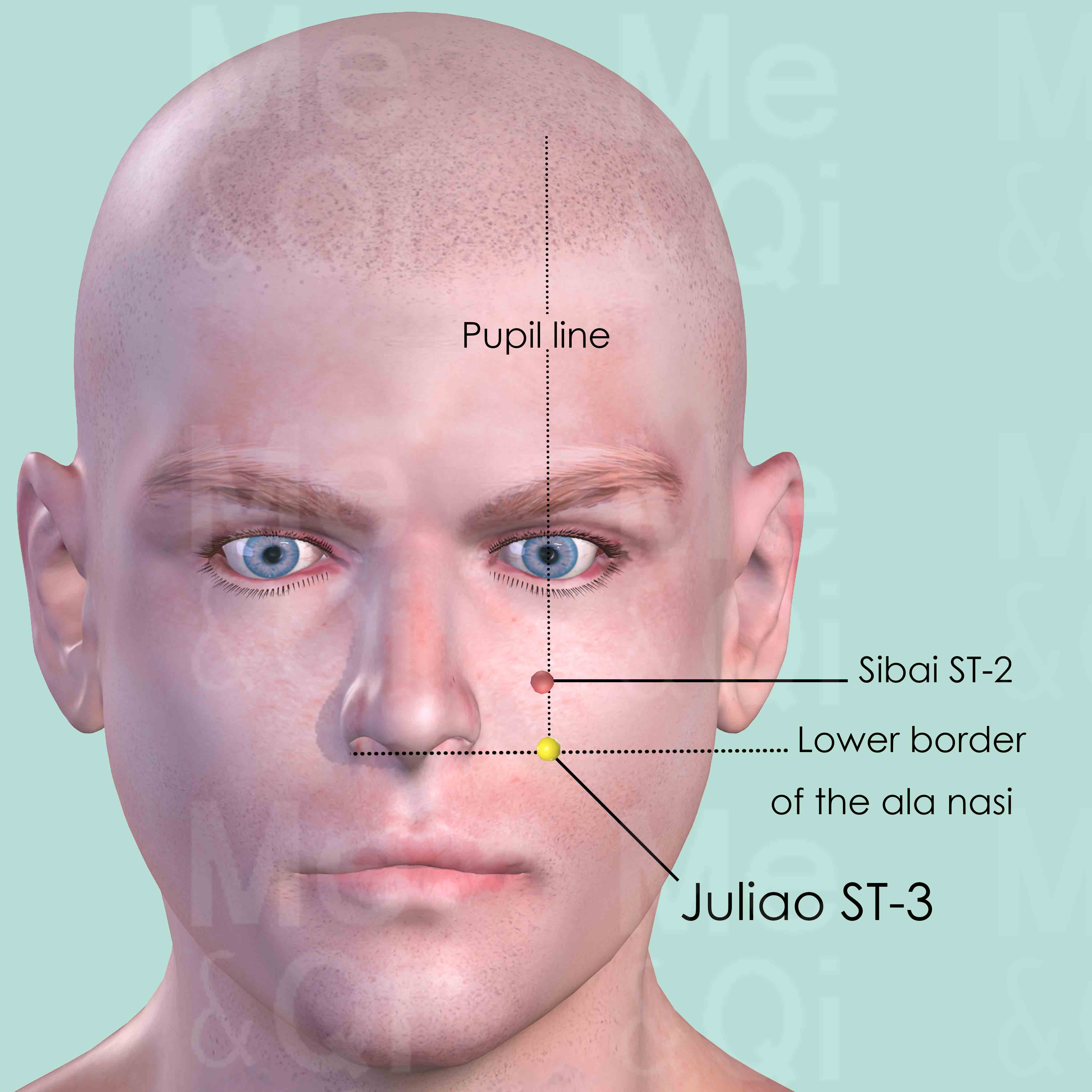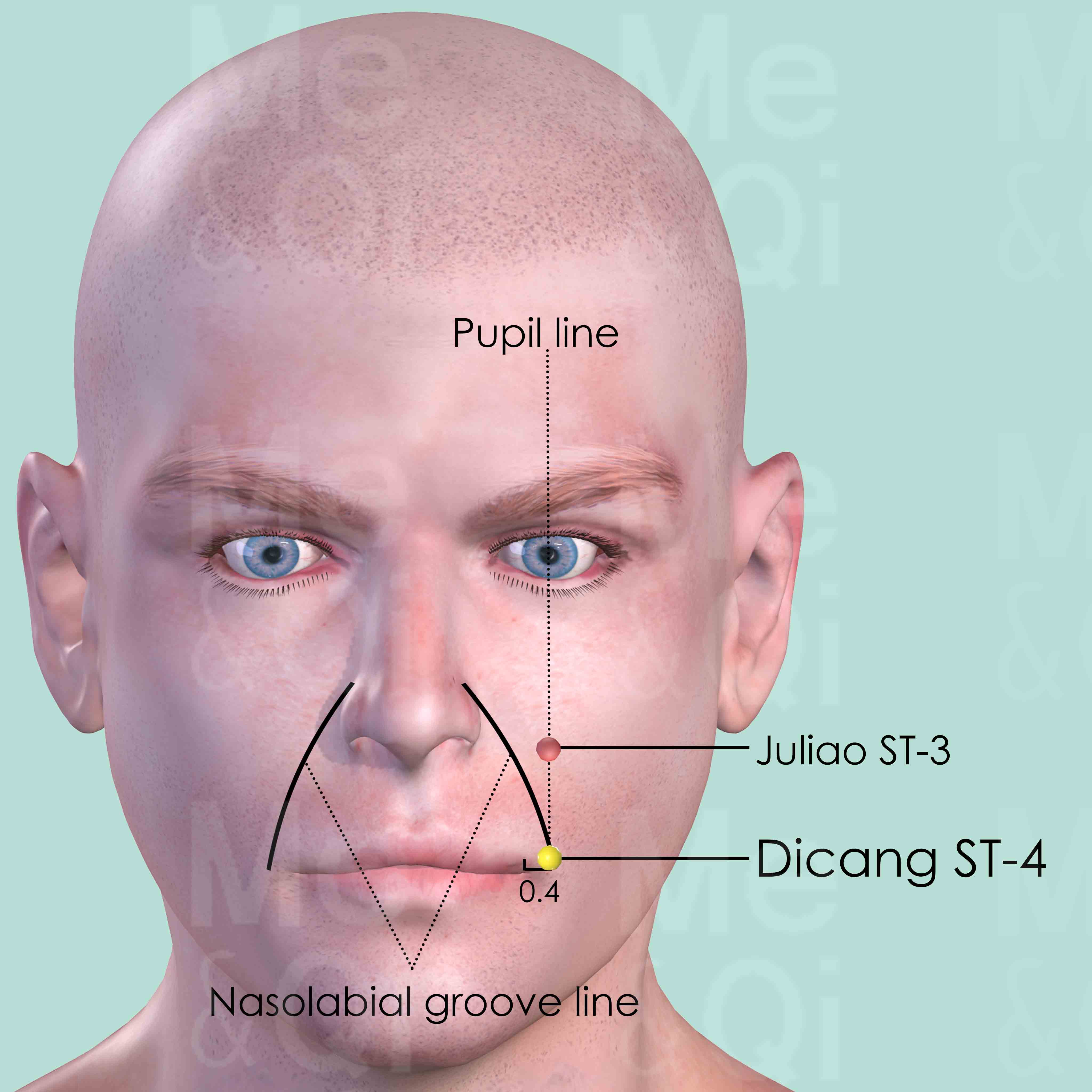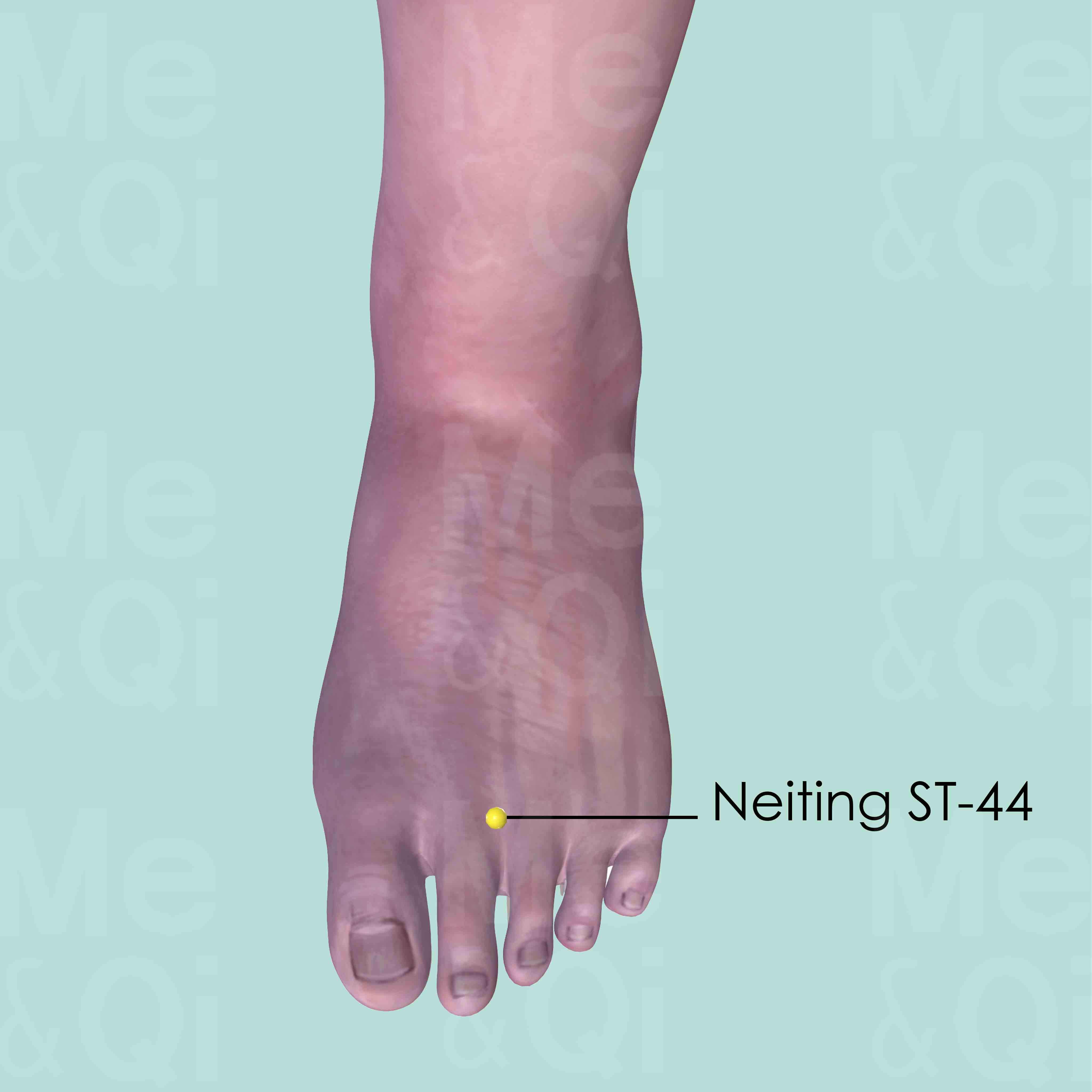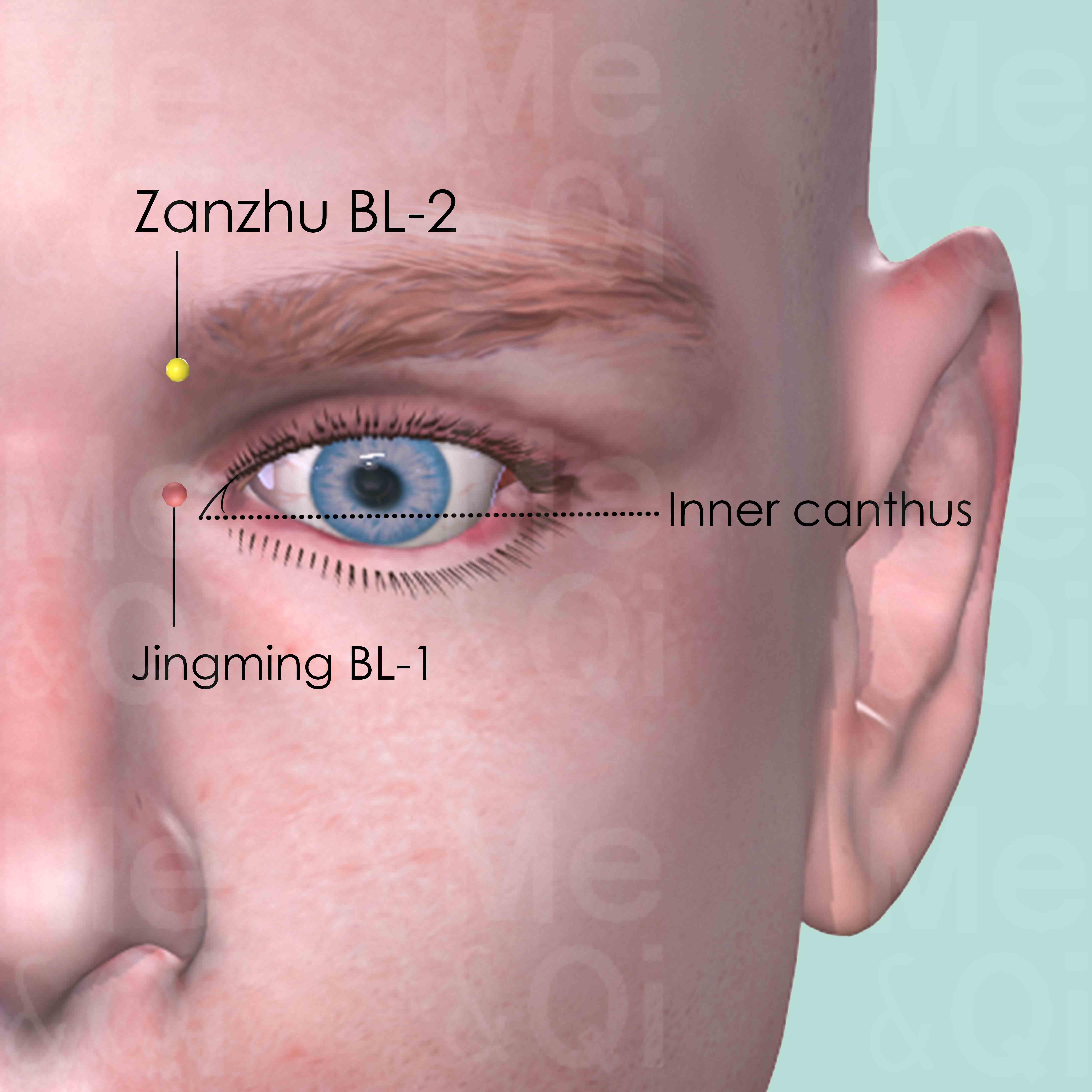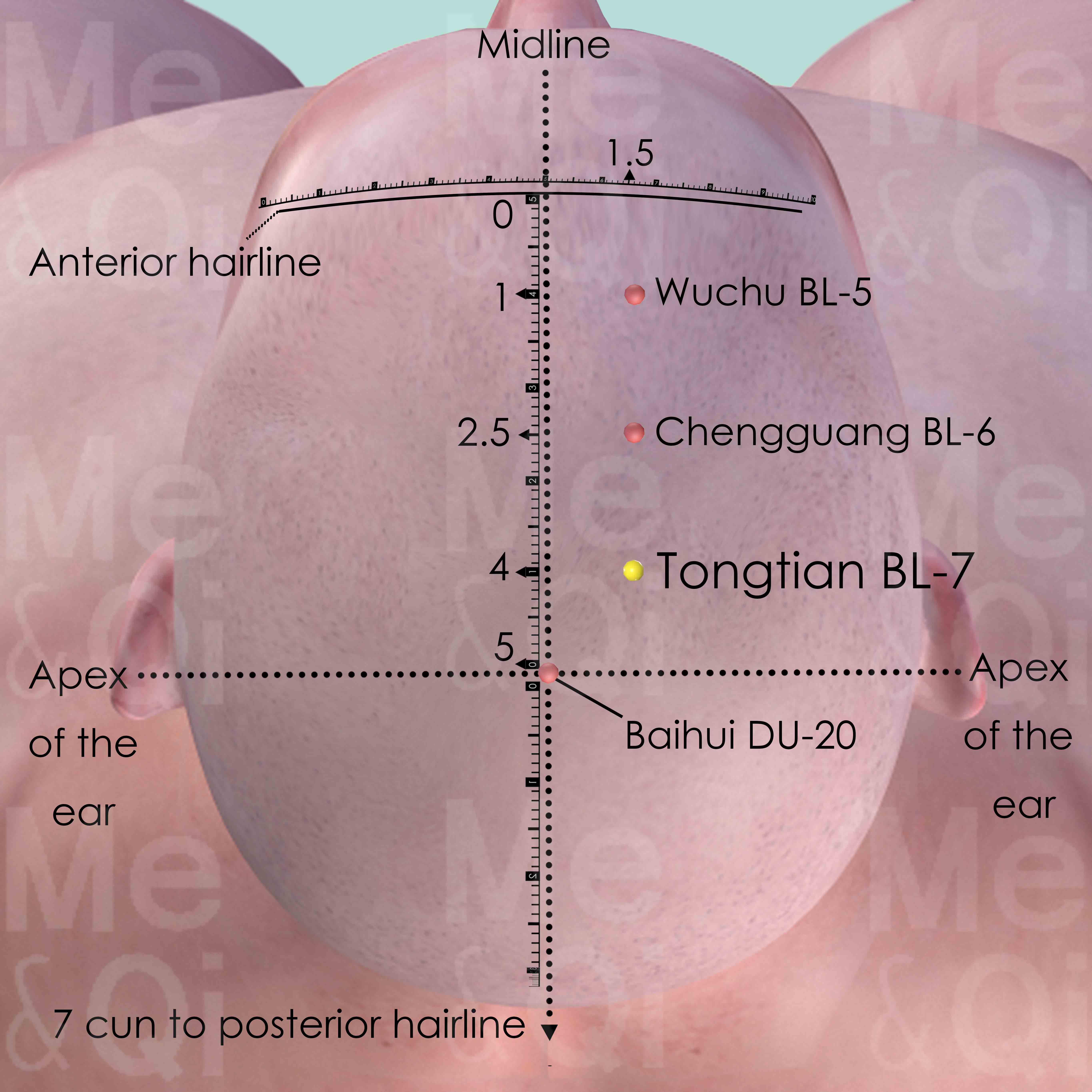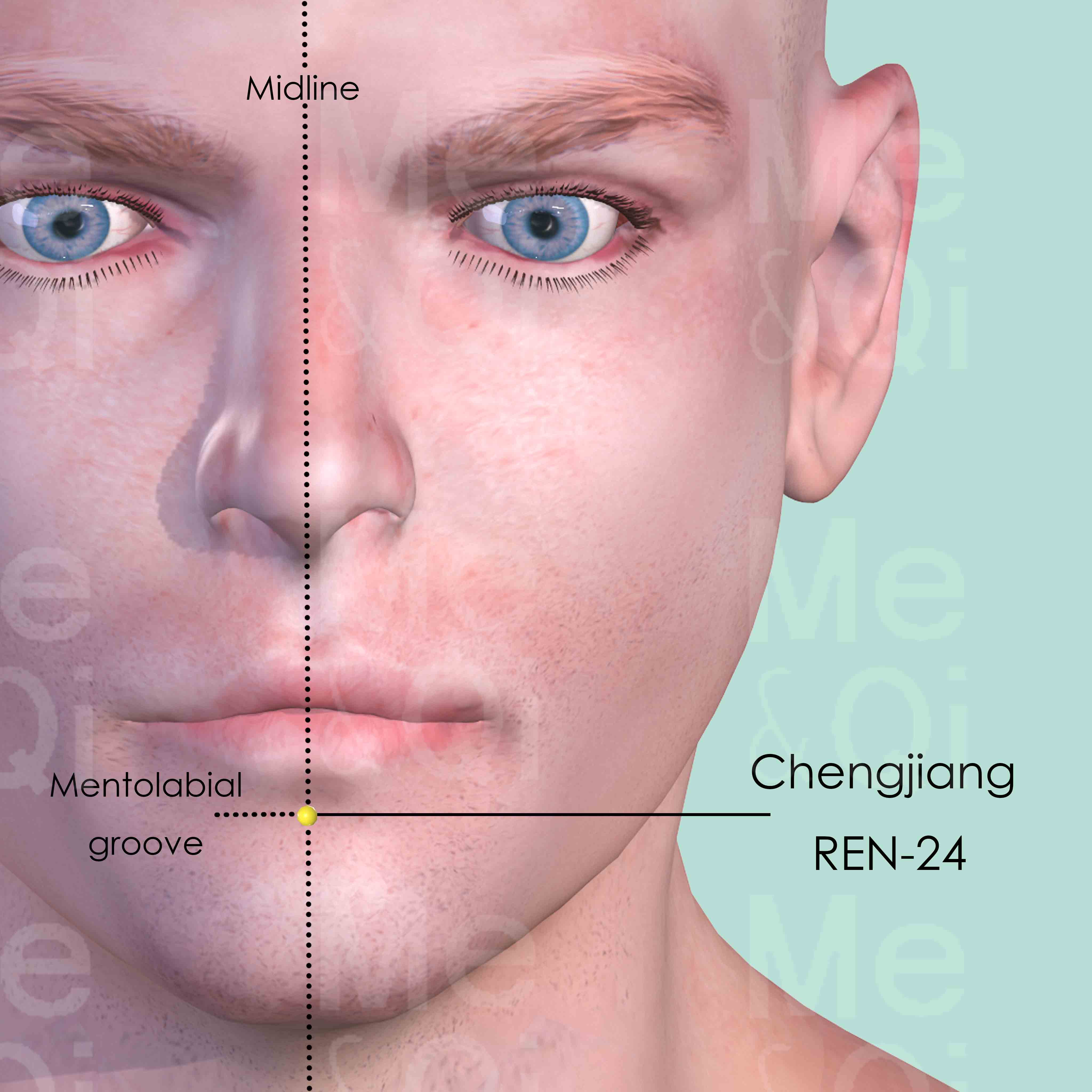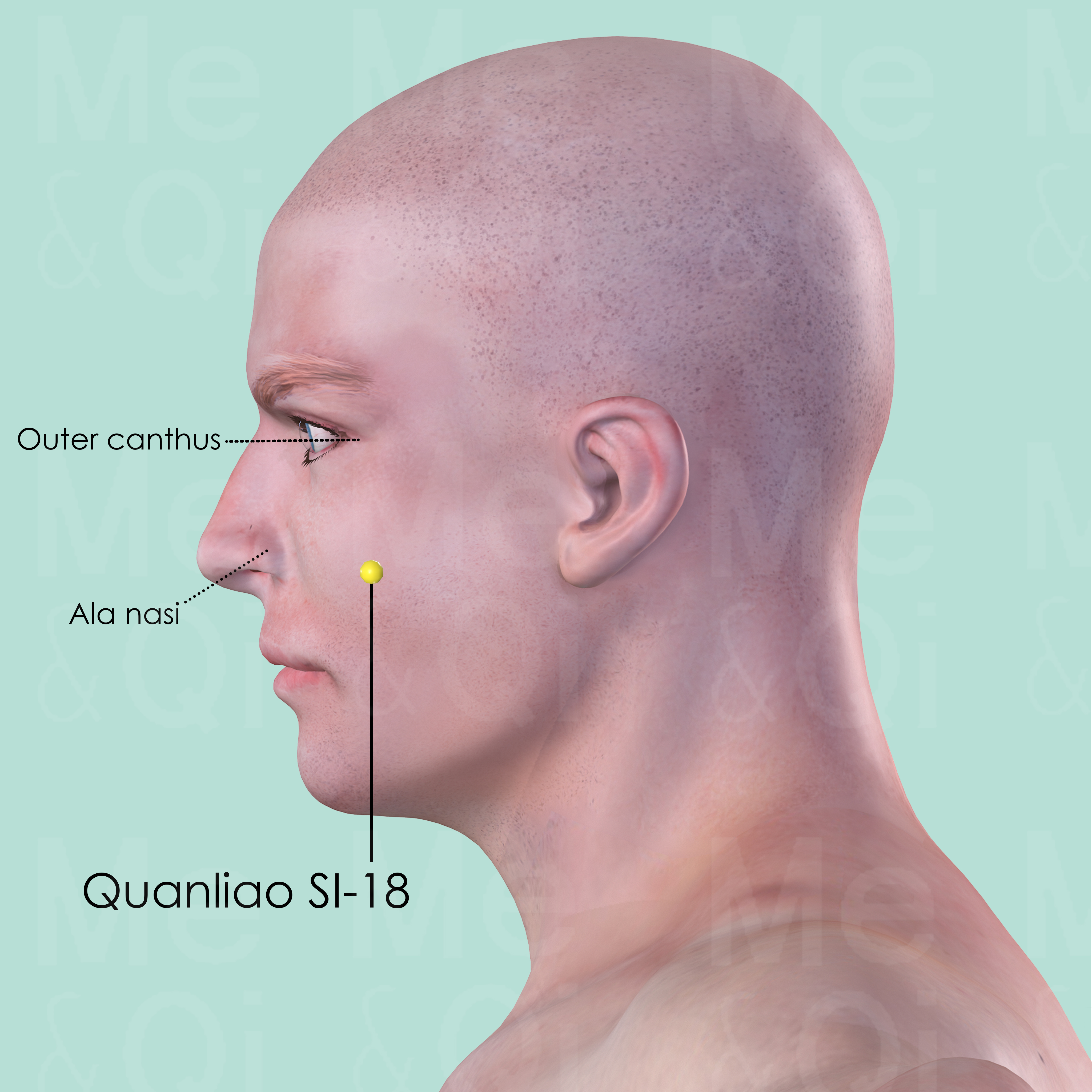Facial Paralysisaccording to TCM
What is Facial Paralysis?
Facial paralysis, commonly known as Bell's palsy, is a condition characterized by the sudden onset of muscle weakness or paralysis on one side of the face. This medical issue can affect a person's facial expressions, leading to difficulties with blinking, smiling, and other facial movements.
The exact cause of facial paralysis can vary, but it often involves damage to or inflammation of the facial nerve, which controls muscles on one side of the face. While the condition can affect anyone, it typically occurs spontaneously and may improve over time with or without treatment.
How does TCM View Facial Paralysis?
Traditional Chinese Medicine (TCM) approaches facial paralysis from a holistic perspective, attributing its onset to the invasion of external Wind and the subsequent imbalance of Qi and Blood within the Channels that traverse the facial region.
TCM emphasizes that symptoms can arise from various patterns of disharmony, making it crucial to identify the specific pattern affecting each individual. This diagnostic process allows practitioners to tailor treatments that address the root cause of the condition, rather than merely alleviating symptoms.
Root Causes of Facial Paralysis in TCM
In TCM, facial paralysis is often linked to the invasion of Exterior Wind, which disrupts the flow of Qi and Blood in the Channels in face area. This disruption can stem from exposure to Cold Winds or a Deficiency in the body's Defensive Qi, making it vulnerable to external pathogenic factors.
Among the patterns associated with facial paralysis, Exterior Wind is a common culprit, presenting symptoms like aversion to cold, fever, and headaches, alongside the characteristic unilateral facial weakness. Treatment focuses on expelling Wind, invigorating Blood, and restoring the harmonious flow of Qi to alleviate symptoms.
Explore below more details about what might cause Facial paralysis according to TCM.
- By Syndrome
- Wind
Wind
In TCM "Wind" is a concept that represents a pattern of disharmony, often characterized by its sudden and unpredictable nature, much like a gusty wind changing direction without warning. This pattern is associated with symptoms that come and go quickly or move around the body, such as itching, tremors, or even certain types of pain. Wind is considered to be a primary cause of illnesses that have these rapidly changing characteristics. In TCM, external Wind often refers to illnesses that start suddenly, like the common cold, believed to be caused by external pathogenic factors like climatic changes. On the other hand, internal Wind can be linked to internal imbalances and can manifest in conditions like dizziness or spasms. ... see more
Wind Patterns That Can Lead to Facial Paralysis
| Pattern Name | Relevant Symptoms | Relevant Formulas |
|---|---|---|
| Exterior Wind | Facial paralysis, Aversion to cold, Fever, Headaches, Anemophobia, Nasal discharge, Clear sputum, Itchy throat, Sneezing, Coughing, Muscle pain, Itchy skin... see more | Chuan Xiong Cha Tiao San |
TCM Herbal Formulas for Facial Paralysis
To combat facial paralysis, TCM prescribes specific formulas aimed at addressing the underlying patterns of disharmony. One such formula is Chuan Xiong Cha Tiao San, which contains Szechuan Lovage Roots (Chuan Xiong) and is categorized under Formulas that dredge and disperse External Wind.
This formula is particularly effective for patterns involving Exterior Wind, as it works to invigorate the Blood and dispel Wind, thus relieving symptoms associated with facial paralysis. By targeting the root cause of the condition, these herbal remedies seek to restore balance and promote recovery.
Explore below some TCM herbal formulas used to address facial paralysis, organized by cause and by formula type.
- By Cause
- By Formula Type
- Wind
- Formulas that regulate blood
- Formulas that warm and transform water and dampness
- Formulas that warm the meridians and disperse cold
- Formulas that invigorate blood and dispel blood stagnation
- Formulas that clear wind-Cold
- Formulas that dispel wind-Damp
- Formulas that dredge and disperse external wind
Top Formula for Wind:
Chuan Xiong Cha Tiao San
Suitable for Wind patterns that may cause facial paralysis, such as Exterior Wind
Learn moreFormulas that dredge and disperse External Wind
These formulas are suitable for some facial paralysis-causing patterns like Exterior Wind.
One such formula is Chuan Xiong Cha Tiao San, with szechuan lovage root as a key herb.
Formulas that regulate Blood
Facial paralysis can be treated by these formulas when it stems from irregularities or imbalances in the blood, which may affect circulation or cause other blood-related issues.
One such formula is Bu Yang Huang Wu Tang, with milkvetch root as a key herb.
Formulas that warm and transform water and Dampness
Facial paralysis can be treated by these formulas if it is due to cold-dampness obstructing the body's functions, requiring warming and damp-transforming actions.
One such formula is Fu Zi Tang, with prepared aconite as a key herb.
Formulas that warm the Meridians and disperse Cold
Facial paralysis can be treated by these formulas if it results from cold obstructing the meridians, leading to pain or stiffness, requiring warming and dispersing actions.
One such formula is Huang Qi Gui Zhi Wu Wu Tang, with milkvetch root as a key herb.
Formulas that invigorate Blood and dispel Blood Stagnation
Facial paralysis can be treated by these formulas if it arises from poor blood circulation or stagnation of blood, which often manifests in pain or swelling.
One such formula is Shu Jing Huo Xue Tang, with dong quai as a key herb.
Formulas that clear Wind-Cold
Facial paralysis can be treated by these formulas when it stems from external pathogenic influences characterized by cold and wind symptoms.
One such formula is Jiu Wei Qiang Huo Tang, with notopterygium root as a key herb.
Formulas that dispel Wind-Damp
Facial paralysis can be treated by these formulas when it arises from a pathogenic influence of wind combined with dampness, which often obstructs the flow of Qi and Blood.
One such formula is Da Fang Feng Tang, with saposhnikovia root as a key herb.
Acupoints for Facial Paralysis
Acupuncture plays a pivotal role in the TCM treatment of facial paralysis, with specific acupoints selected to expel Wind, stimulate the circulation of Qi and Blood, and alleviate symptoms. Points such as Dicang ST-4 and Juliao ST-3 on the Stomach Channel, and Hegu LI-4 on the Large Intestine Channel, are often utilized for their effectiveness in removing obstructions from the channels and expelling Exterior Wind.
These acupoints, along with others like Chengjiang REN-24 and Haiquan EX-HN-11, are strategically chosen to target the disharmony patterns identified in the patient, offering a nuanced approach to treatment that aims for a holistic restoration of health.
Explore below some acupoints used to address facial paralysis, organized by meridian.
- By Meridian
- Stomach Channel
- Large Intestine Channel
- Bladder Channel
- Directing Vessel
- Extra Points: Head and Neck (EX-HN)
- Small Intestine Channel
- Gall Bladder Channel
- Triple Burner Channel
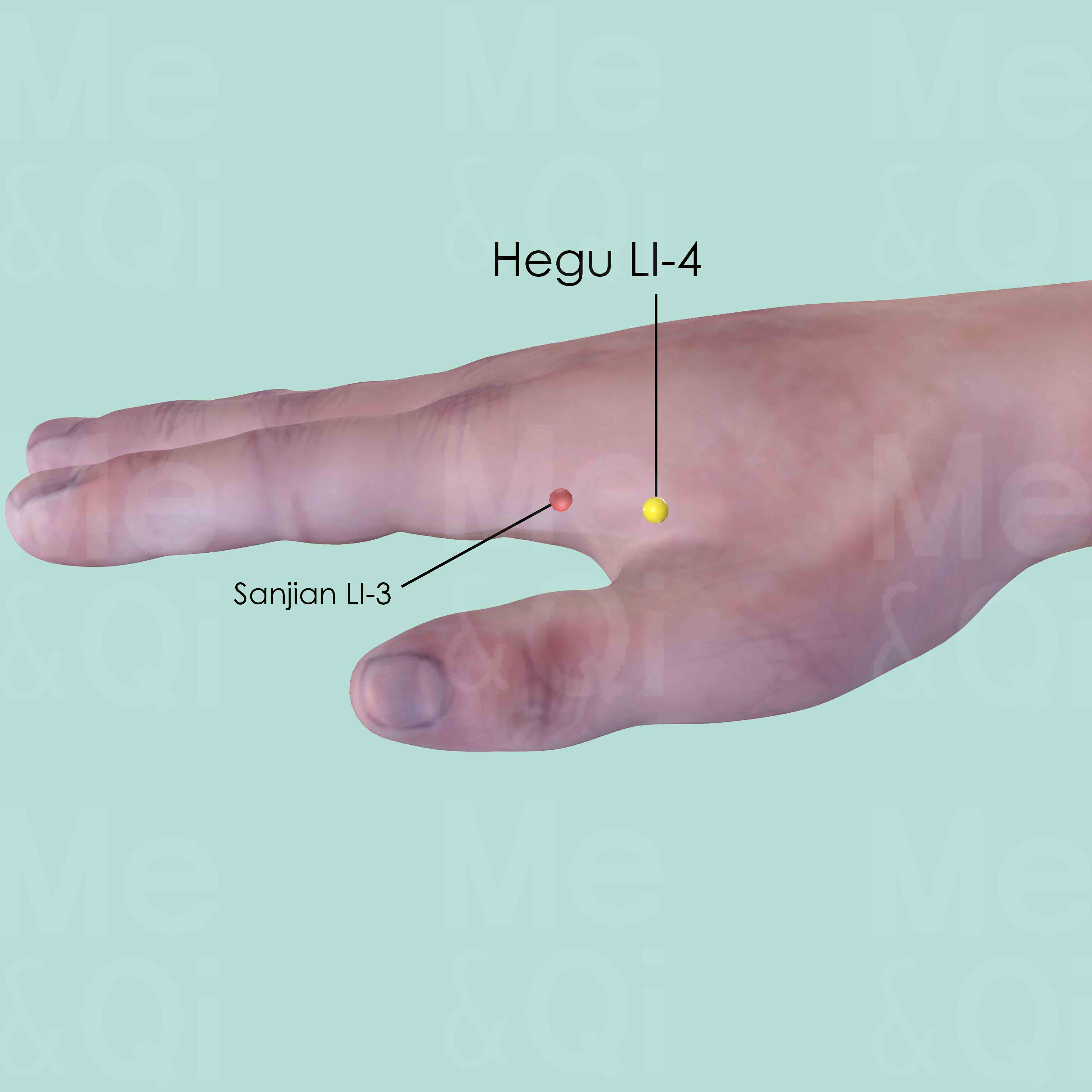
Hegu LI-4
Between the 1st and 2nd metacarpal bones, approximately in the middle of the 2nd metacarpal bone on the radial side.
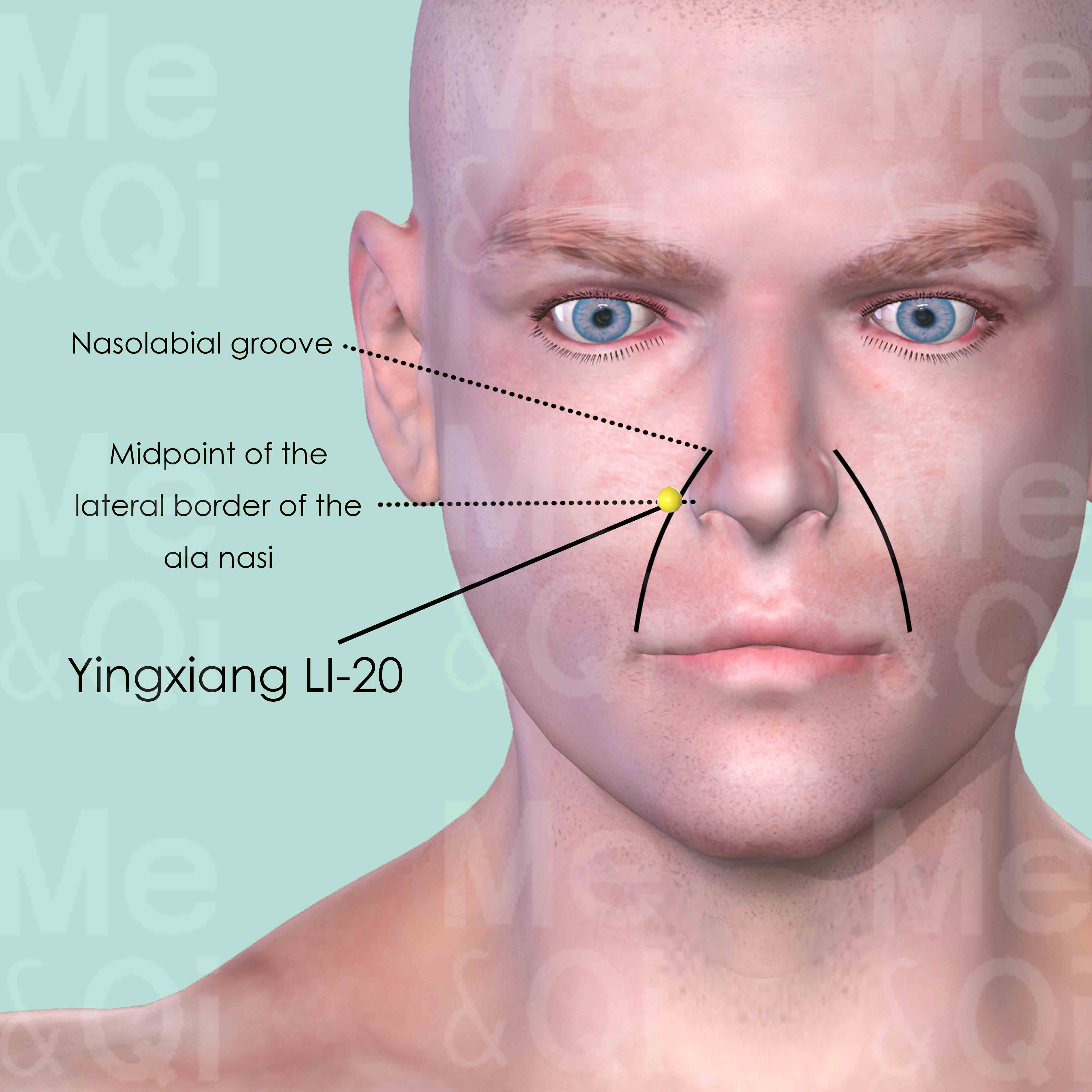
Yingxiang LI-20
In the nasolabrial groove, at the level of the midpoint of the lateral border of ala nasi.
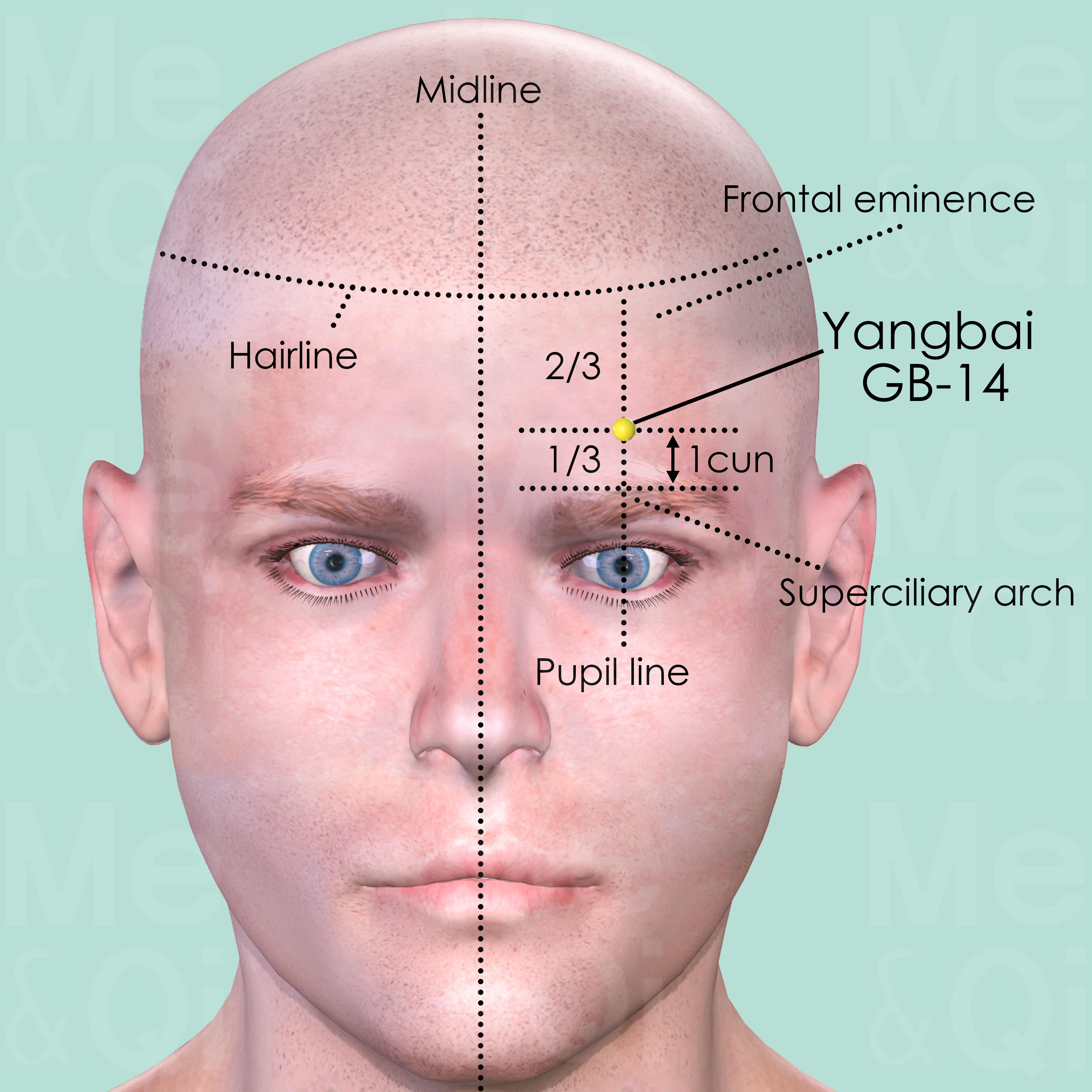
Yangbai GB-14
On the forehead, 1 cun above the midpoint of the eyebrow, approximately at the junction of the upper two-thirds and lower third of the vertical line draw from the anterior hairline to the eyebrow.
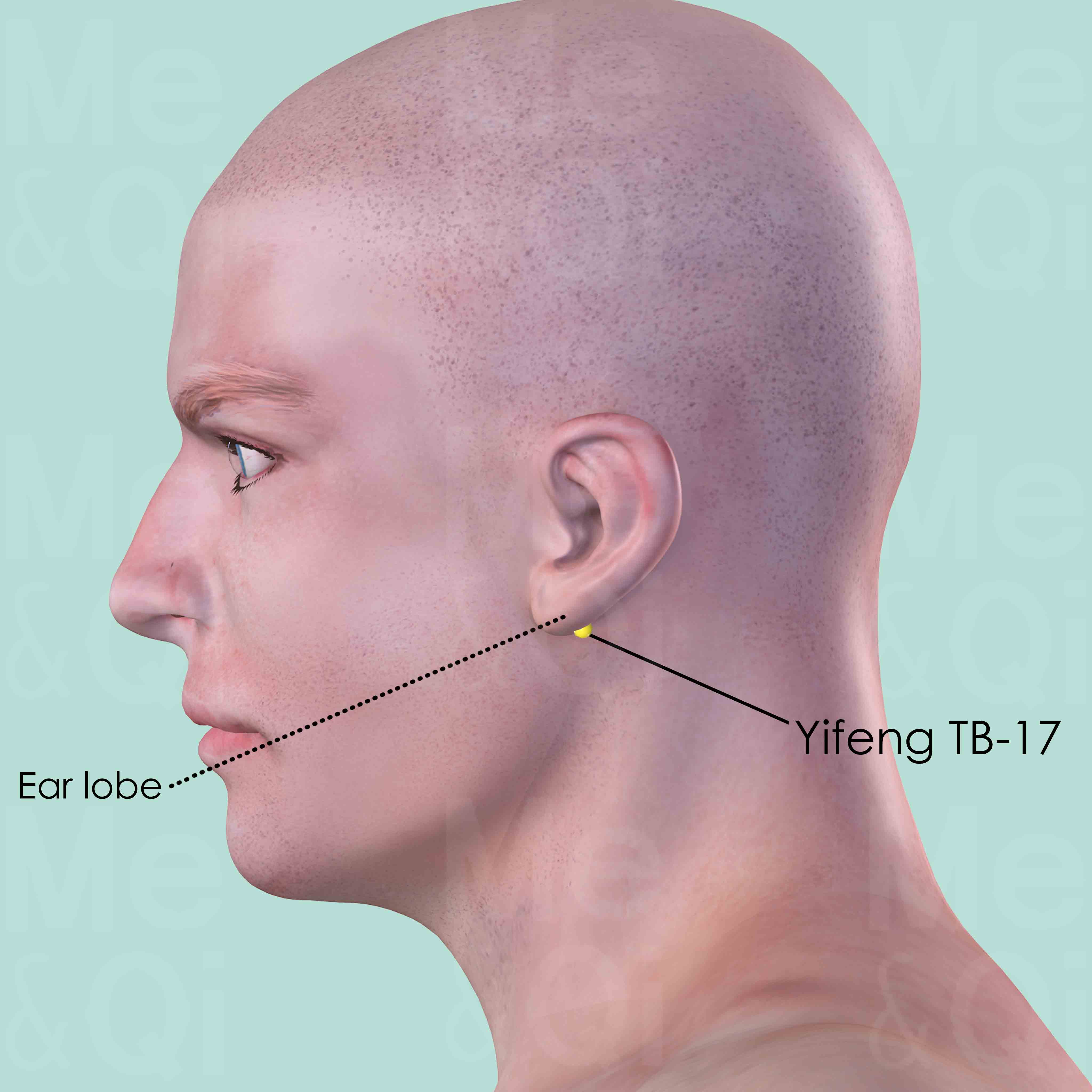
Yifeng TB-17
Posterior to the lobule of the ear, in the depression between the mandible and mastoid process.

